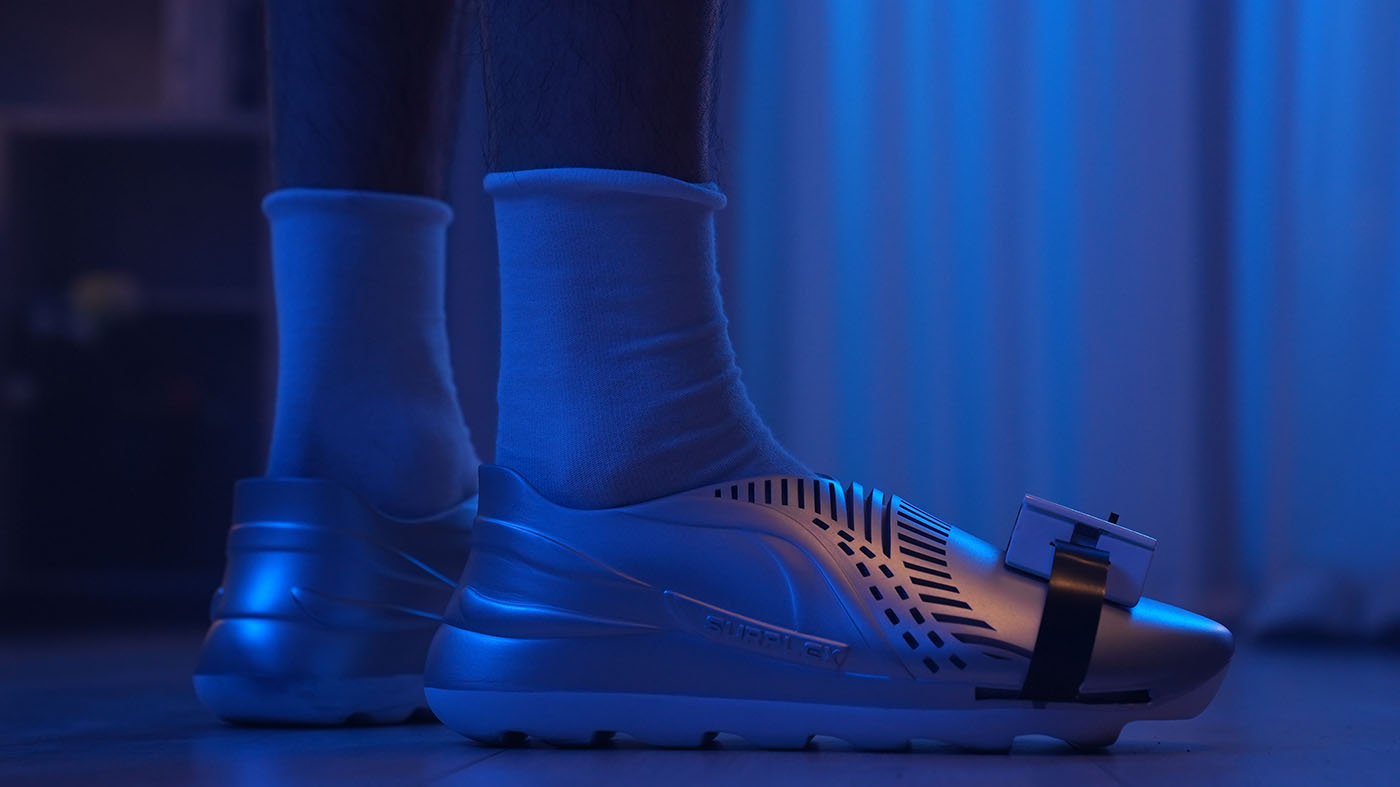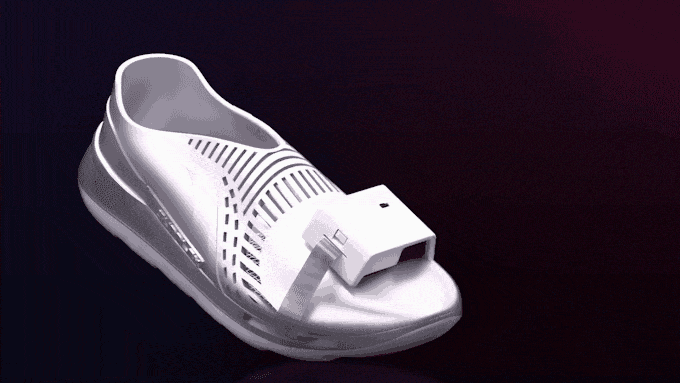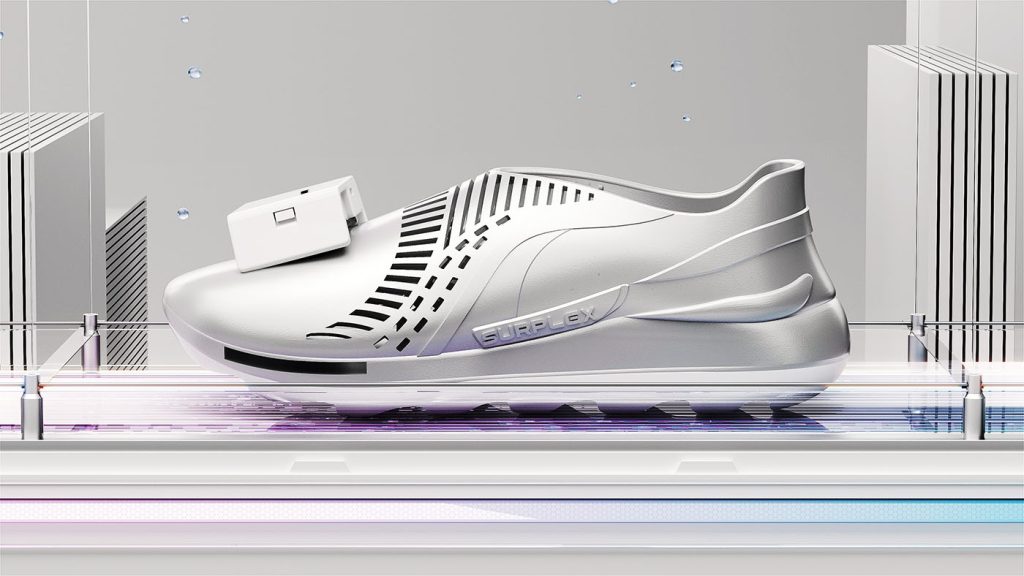
Axl Chen, Parsons Design and Technology ’23, Creates Surplex, VR Tracking Shoes that Capture Full Body Motion
When you study in the Design and Technology program at Parsons, inspiration for your next project can come from anything, and you typically have the opportunity and resources to make it a reality.
For Axl Chen, Design and Technology ‘23, the idea for his new VR startup, Surplex, started in a major studio course, when he was studying in an exchange program at Tsinghua University through the Parsons Global Offsite program. As a member of the Tsinghua Snowboard Team, Chen was utilizing wearable technology in order to fine tune his performances, but the on-body sensors were too cumbersome, which led to his research and creation of a full body tracking system, elegantly embedded in a shoe.
As the Founder and CEO of Surplex, Chen is responsible for the daily management of his team, various engineering tasks, such as textile pressure sensor R&D, PCB schematics design and manufacture, and much more. His team includes Yuedi Zhang, BFA Fashion Design ‘21, who helped design the shoe, as well as to researchers, engineers, technical advisors, and more.
“Everything has been going great, at the same time, it’s challenging to have lots of attention from backers, press, and industry partners,” shares Chen. “I am thrilled but also humbled. I will definitely try my best to deliver the best product form to users’ hands!”
Surplex is currently on Kickstarter, where the project’s goal was $10,000, but has since raised more than $60,000, with a week left to go during the fundraising campaign. The product that Chen and his team plan to launch has 480 pressure sensors and two IMU embedded, allows users full range of motion without worrying that they’ll tangle themselves up in wires and cords, and connects to a variety of VR headsets.


“We actually started with the idea of extendable pressure-sensitive tiles which can be assembled together as a smart floor for full body tracking, but that approach didn’t work out because we found out it’s hard to capture users’ leg movements with that approach if users lifted their legs,” explains Chen. “We researched various sensors to bridge the gap and discovered IMU to be most feasible in our use case, with more affordable costs and stable performances. Later, we started to collect a lot of human kinematics data and train our neural network. We collected around 500k frames in order to achieve the algorithm’s performance.”
In addition to a lack of cords and wires, Chen and his team have ensured that Surplex will work with all major FBT VR games, including VRChat, Blade and Sorcery, Beat Saber and Neos VR. They are also in conversation with game studios to release “full body tracking” versions of various fan-favorite titles, including VRWorkout, Planet Theta, and Tennis Esports.
“Previous approaches that are available to customers are either expensive, requiring cumbersome setup such as a base station, or requiring frequent calibration due to drifting,” says Chen. “Our products are the first shoes to have a full body tracking feature. Not only not prone to drifting, Surplex’s shoes are also much more affordable for VR users.”
Chen’s time at Parsons allowed him to build a community with smart, ambitious designers, and receive generous support from professors and faculty.
“Specifically, the DT program has a very open environment where everyone gets a chance to explore what they like. That supported me to start this project.”
Like Chen, many Parsons students and alumni are pursuing unique and innovative projects that reflect the mission and vision of the university. Recent graduates from the MFA Textiles and MFA Fashion Design and Society programs showcased their collections during New York Fashion Week, which explored gender and the body, creative reuse and sustainability, and speculative futures and worldmaking. Sofia von Hauske Valtierra, Product Design ’17, Design and Technology ’19, helps create immersive experiences for kids through design, while MFA Photography grads are highlighting complex themes through their thesis collections, which were recently on view at the Kellen Gallery.
As Chen and his team continue to work on Surplex and move forward with a consumer launch, they are thinking about how the product can be used in different ways. They have received inquiries to collaborate with medical and health companies, as the VR technology can be utilized in medical analysis with regards to foot pressure, among other applications.
“In all, we see a lot of potential with this product and we will continue exploring it,” says Chen. “Aside from this product, we also strive to bring a more immersive experience to XR users in the future, so we are also in the research phase of a wristband that can capture users’ hand movements, helping users to control XR interfaces more efficiently and easily.”